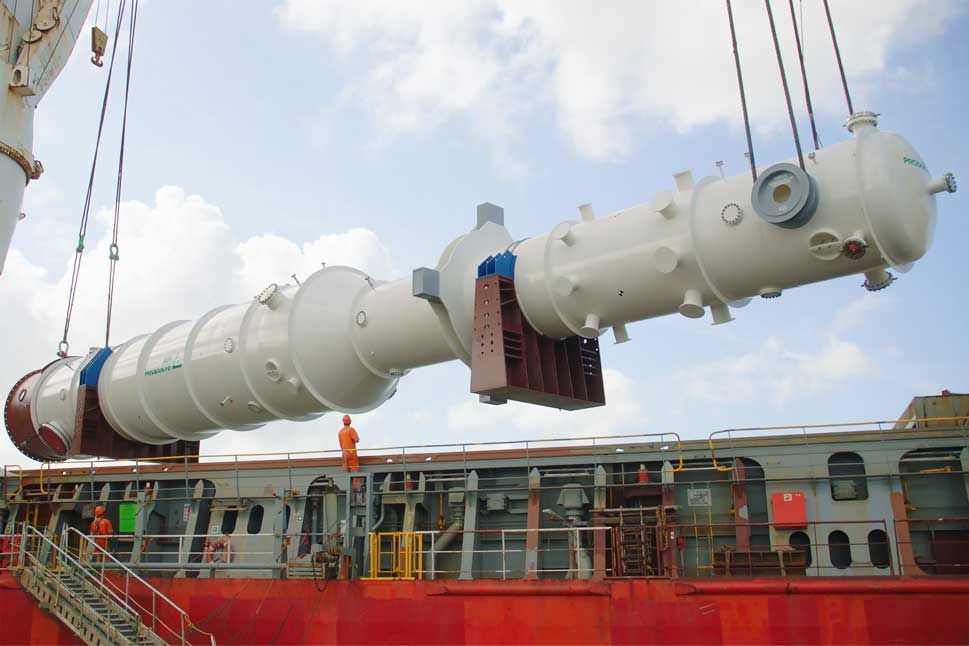Honeywell Agrees to $1.81B Acquisition of Air Products’ LNG Technology Business
Air Products’ LNG process technology and equipment business is headquartered in Allentown, PA, with a coil-wound heat exchanger (CWHE) manufacturing facility in Port Manatee, FL.
As outlined in a joint announcement, Honeywell will acquire Air Products’ LNG business portfolio, including its in-house design and manufacturing of CWHEs and associated equipment. Following the all-cash transaction valued at $1.81 billion, Honeywell’s offerings will include natural gas pre-treatment and liquefaction services supported by its digital automation technologies—the Honeywell Forge and Experion platforms. The purchase establishes a full-service solution for efficient, optimized management of natural gas assets.
“While the world continues to build the renewables-based energy infrastructure of the future, natural gas is a critical lower-emission and affordable transition fuel that will help meet ever-increasing and dynamic global energy demands,” said Vimal Kapur, Chairman and CEO of Honeywell. “This complementary acquisition will further strengthen our energy transition portfolio, and Air Products’ CWHE technology will immediately expand our installed base—creating new opportunities to compound growth in aftermarket services and digitalization through our Honeywell Forge platform.”
Air Products’ CWHEs provide high throughput of natural gas in a small footprint, enabling safe and reliable operations onshore and offshore. The business, headquartered in Allentown, PA, has approximately 475 employees and a 390,000-square-foot CWHE manufacturing site in Port Manatee, FL.
CWHE being loaded for export in Port Manatee; Image Credits: Air Products

“The decision to divest our LNG heat exchanger technology and equipment business reflects Air Products’ continued focus on its two-pillar strategy—to grow our core industrial gas business and related technology and equipment, and to deliver clean hydrogen at scale to decarbonize industrial and heavy-duty transportation sectors,” said Seifi Ghasemi, Chairman, President and CEO, Air Products. “The LNG business is in good hands to advance as part of Honeywell’s related portfolio of technologies.”
In May 2024, Honeywell and Weatherford partnered on a comprehensive emissions-management solution for upstream operators. By combining Honeywell's emissions management suite with Weatherford's Cygnet SCADA platform, the integrated solution aims to help oil and gas upstream operators track emissions data in near real-time, identify and address potential issues, and meet regulatory requirements. The collaboration also provides customers access to analytics and reporting capabilities.
Also in May 2024, Air Products’ Membrane Solutions business released the PRISM GreenSep LNG membrane separator, which can be applied to bio-LNG production and increases yield, reduces operational expenses, and lowers energy consumption. The new membrane separator eliminates intermediate purification technologies, such as amine scrubbing and thermal swing adsorption, required to produce bio-LNG, which is liquefied biomethane derived from food, animal, or municipal waste.
The Membrane Solutions segment develops hollow fiber membrane separators and systems for onsite gas generation. Its PRISM membrane separators contain thousands of polymeric hollow fibers that serve as a molecular filter to isolate gases into singular elements, including methane, nitrogen, and hydrogen. This product portfolio serves aerospace, offshore drilling, food and beverage, transportation, and defense.
Earlier that month, Air Products’ AP-DMR process and equipment, which was deployed at the Coral South floating liquefied natural gas plant in Mozambique, Africa, passed its performance test and achieved LNG production above 3.4 million tons per year. The dual-mixed refrigerant LNG process maintains a high efficiency, reliable operation, and has a compact footprint. Its process efficiency, in combination with aeroderivative machinery, lowers the carbon intensity in comparison to other LNG processes in floating applications.